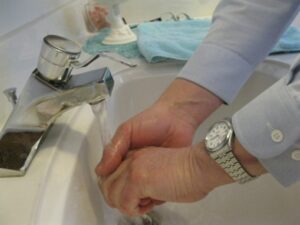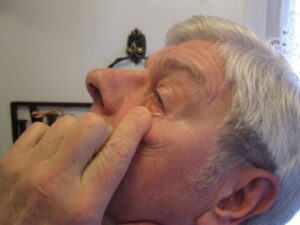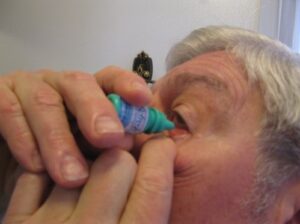
A successful surgery
requires a partnership between
you and Dr. Affleck.
A successful surgery requires a partnership between you and Dr. Affleck. Understanding and following instructions are essential to a safe experience and good outcome.
Read all pre-surgery instructions given to you by Affleck, M.D. Eye Care Staff shortly after your pre-surgical consult. This will allow you time to prepare for a successful surgery with Dr. Affleck in Idaho Falls. Some tasks you will have to ensure a safe experience and good outcomes is making transportations arrangement, find a caregiver and purchase items used for after the surgery.
Good outcomes also rely on focusing on the financial part of the surgery. This means calling your insurance to confirm your coverage and out-of-pocket costs. Please review the following information carefully, so you will have no surprises. Additional related reading is found on our insurance and billing page. Click here
2-3 Weeks before Surgery
FOCUSING ON THE FINANCAIL PART:
Many insurances require a pre-authorization before a surgery can take place. As soon as possible, before the surgery, you will need to contact your insurance company and become aware of:
- Changes of co-insurance
- Pre-authorizations
- Restrictions
- Referrals
We will assist as best we can however, it is you, the responsible party’s obligations to obtain referrals, pre-authorization required by the insurance carrier and accept liability for charges should the insurance carrier deny benefits.
Your insurance is the only direct source to find cost of services. This includes cost of surgical treatment. Click Here to find a worksheet for Cataract surgery. This will help you get a good faith estimate from your insurance.
For premium IOL, cosmetic services and other non-covered services, payment is due at the time of scheduling.
If you have no insurance benefits, we offer CareCredit (Click here to go to CareCredit). All surgeon fees will need to be paid two (2) weeks before surgery date for self-pay patients.
A surgery typically has three entities, the surgeon, the surgical facility, and the anesthesia. When asking for the cost, make sure you get the allowed amount for all three. This means you will also likely, receive multiple bills for your surgery. We will bill your insurance company and you will be responsible for the amounts not covered by your insurance.
FOCUSING ON THE CAREGIVER PART:
You will not be allowed to drive your self home. So please arrange for a responsible adult to drive you home from the surgical center.
You will need a responsible adult to care for you at least 24 hours after surgery. You will need help placing drops in your eyes, makings meal, and other care. DO NOT GO IT ALONE.
POST-OPERATIVE CARE
At your pre-operative exam and consult with Dr. Affleck you will receive instructions for your post-operative care. Have those caring for you after your surgery read the instructions before your surgery. You and the caregiver should work together to be prepared with supplies and after care instructions. Read carefully, these instructions will also include restrictions and warning sign.

Other related reading can be found on Eagle Rock Ambulatory Surgery Center. Click here for more information
You will need a responsible adult to care for you at least 24 hours after surgery. You will need help placing drops in your eyes, makings meal, and other care. DO NOT GO IT ALONE.
POST-OPERATIVE CARE
At your pre-operative exam and consult with Dr. Affleck you will receive instructions for your post-operative care. Have those caring for you after your surgery read the instructions before your surgery. You and the caregiver should work together to be prepared with supplies and after care instructions. Read carefully, these instructions will also include restrictions and warning sign.

Other related reading can be found on Eagle Rock Ambulatory Surgery Center. Click here for more information
1 Week before Surgery
FOCUSING ON SUCCESSFUL OUTCOME:
Before any eye surgery you want the condition of your eye to be as healthy as possible for quicker healing. One way this can be done is with hydration therapy. It is quite simple and takes only a few minutes a day. At least a week or more before surgery apply lubricant or moisture drops (also known as artificial tears) to the eye three times daily. Also drink plenty of water each day.
Dr. Affleck recommends lubricant drops with no preservatives. Some brand names without preservatives are: Refresh Tears, Systane, Thera Tears, Blink Tears and GenTeal. These drops are found at your local stores and pharmacy and are over the counter drops.
For those who wear contact lenses rewetting drops must be used while wearing your lenses or do not wear the lenses when applying the drops. Also wait 5 minutes before replacing the lenses. Some rewetting drop brand names without preservatives are: Opti-Free, Complete, Lens Plus, Genuine Sensitive Eyes, and ReNu, Blink Contacts, Thera Tears Contact Lens Comfort Drops.
“Dry eye” or under hydrated eye can be caused by many factors like age, prolonged contact lens wearing, exposure to sun, wind, dry air and medical issues.
Dry eye is very common in this area and many times is considered a medical condition. Talk with Dr. Affleck for more specific information about the treatment and your own situation if you experience chronic dry eye.

Carefully read all instructions before using your drops or ointment. Store drops or ointment in a dry spot, away from direct light or heat at room temperature. Do not use the drops if they change color from what they were or have small bits floating in them. Follow these steps to put in eye drops correctly:

Have others place drops in your eyes until you no longer feel the effects of the anesthesia. For some patients this can be 4 hours or more. It may be easier to put in the eye drops if you use a mirror.
STEP ONE: Wash your hands thoroughly with soap and water.

STEP TWO: While tilting your head back (or towards your shoulder), pull down the lower lid with your index finger to form a pocket. Brace the remaining fingers of that hand against your face.

STEP THERE: Hold the dropper (tip down) with the other hand, as close to the eye as possible without touching it. While looking up, gently squeeze the dropper so that the correct number of drops falls into the pocket made by the lower eyelid. Placing some drops on the surface of the eyeball (cornea) may cause stinging

STEP FOUR: While Press your index finger against the inside corner of your eye (tear duct) next to your nose (so drop will not drain quickly), slowly raise you head back into up-right positions. At the same time blink quickly to spread the medication across the eye.
Next with finger still pressed against the tear duct, close eye for 1 minute. This allows the Medicine to start working in the eye. Wipe any excess liquid from your face.
Dr. Affleck recommends lubricant drops with no preservatives that can be purchases over the counter and are found at most local stores and/or your pharmacy. Some brand names without preservatives are:
- Refresh Tears
- Systane
- Thera Tears
- Blink Tears
These drops are found at your local stores and pharmacy and are over the counter drops. For those who wear contact lenses, rewetting drops must be used while wearing your lenses. Do not wear your lenses when applying the lubricant drops. Wait 5 minutes before replacing the lenses back onto the eye. Some rewetting drop brand names without preservatives are:
- Opti-Free
- Complete
- Lens Plus
- Genuine Sensitive Eyes
- ReNu
- Blink Contacts
- Thera Tears Contact Lens Comfort Drops

